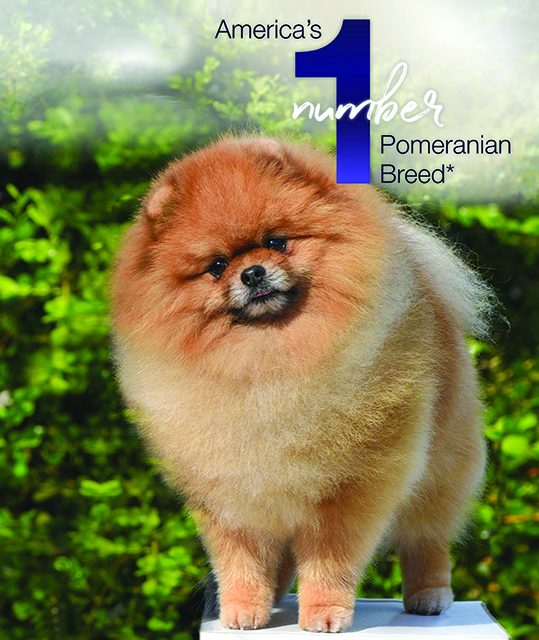AN INTERVIEW WITH CANTON POMERANIANS
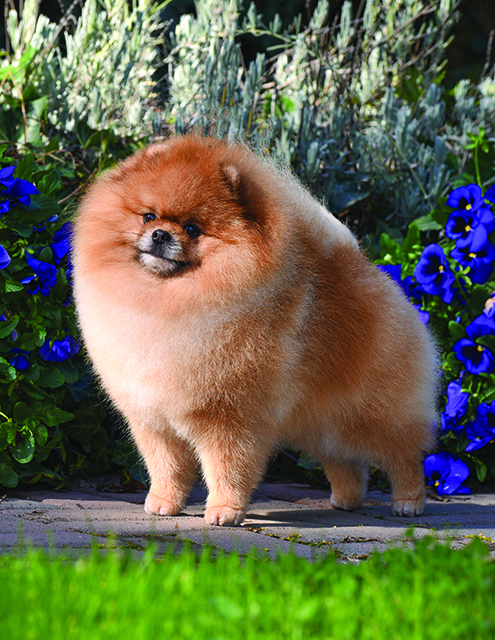
Although Pomeranians are small dogs, their genetic roots hail from big sled dogs. It is arguably their size – and perhaps how they descended from much larger canines – that makes Pomeranians one of the most loved animal companions.
To give you your fix of these adorable fluff balls, Animal Scene talks to Canton Pomeranians – well- known in both local and international circles – about their love for everything Pom.
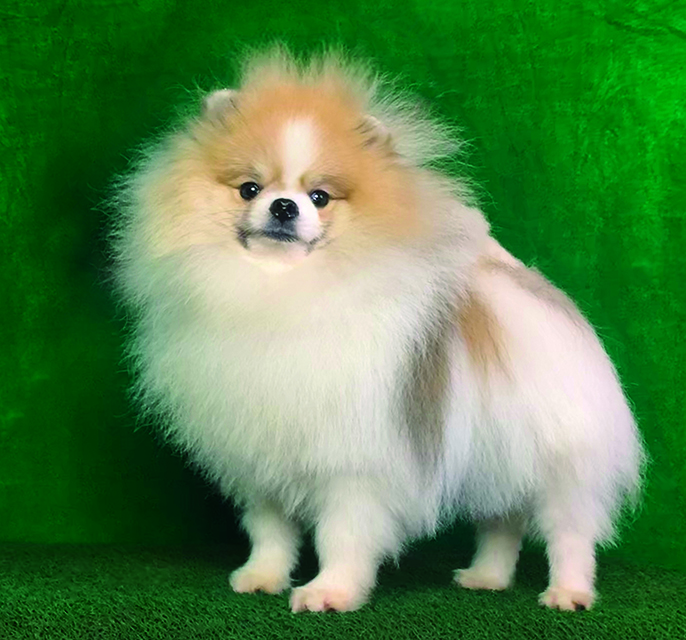
Animal Scene: When and how did you get started in the field of dogs?
Canton Pomeranians: I come from a non-dog family. Our experience in dogs at that time was limited to a German Shepherd guard dog named Tarzan. For us, anything dog-related was [unclean] and dirty.This orientation changed to the opposite side of the pendulum in 1977 when I decided to do a quick thesis for my Master degree in Business Management [titled] Commercial Breeding of Pedigreed Toy Dogs. It was a decision made to shortcut the compliance to a business program with a thesis that I completed in two months, the first in my class.
[It] would have been easier [had] all the research materials [been] easily available in one place: the Philippine Canine Club – the official Fédération Cynologique Internationale (FCI) club of the Philippines – with its directors and member breeders. I rationalized that it would be hard to defend a thesis when I [had] no experience whatsoever with dogs.
And so, in partnership with my brother Benjamin, we imported a Japanese champion pom named Jap Ch Secret Dandy of Azalea Saly. This dog would eventually become the top winning dog of all time in the country, with multiple Best in Shows dominating the Philippine show ring at that time. From thereon, I was hooked with the show bug, and what was supposed to be a business venture turned into an expensive, passionate hobby.
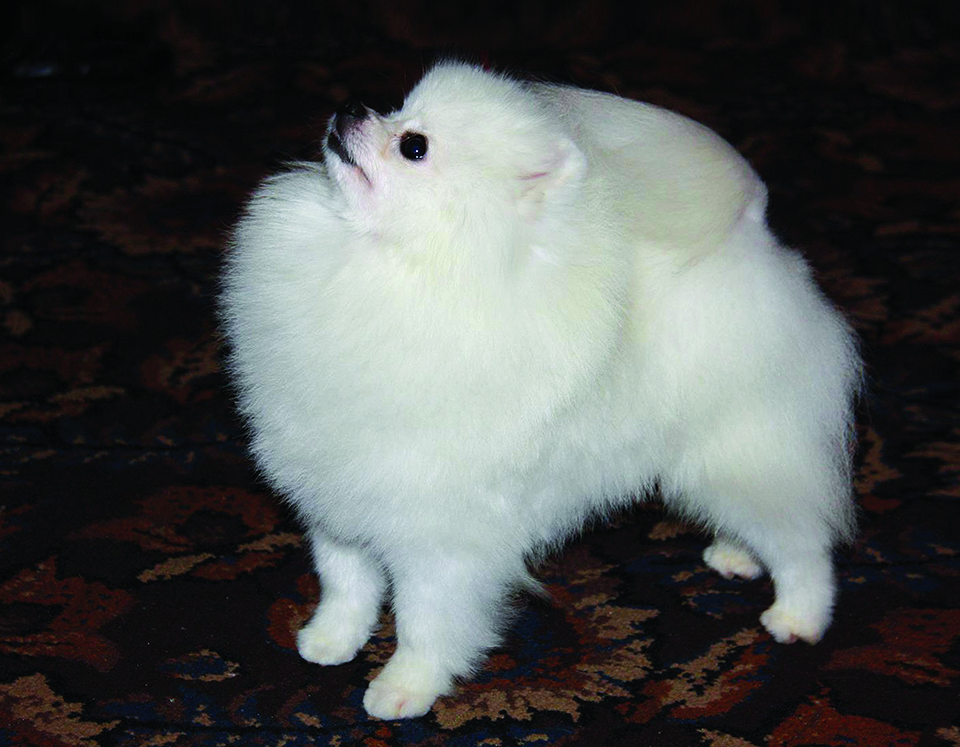
AS: Your Kennel name is Canton. Does this name have any special significance?
CP: The name Canton came from the street [where] I lived at the time: Canton Street in BF Paranaque. Therefore, Canton Pomeranians.
I also use another kennel name, Yingyang, for [those with] exotic colors, such as Chocolates, Particolors, Merles and Brindles. I would upgrade them by using standard colors, thereby ensuring [that] eventually, all my Pomeranians would share a common bloodline and would be easier to breed back and forth [regardless of color].
AS: Was the Pomeranian your first breed, or did you have any others prior to them?
CP: [The] Pomeranian has always been my breed [of choice]. Previously, I would have a second breed each changing
over time [to make this hobby self- supporting]: Pomeranian and Pekingese, Pomeranian and Shih Tzu, Pomeranian and Shetland Sheepdog, [or Pomeranian with] Maltese, Miniature Pinscher, Doberman, German Shepherd, etc.
My last second breed was the Shetland Sheepdog, but I decided to stop [with] second breeds, since doing Pomeranians in different colors and patterns was enough variety for me.
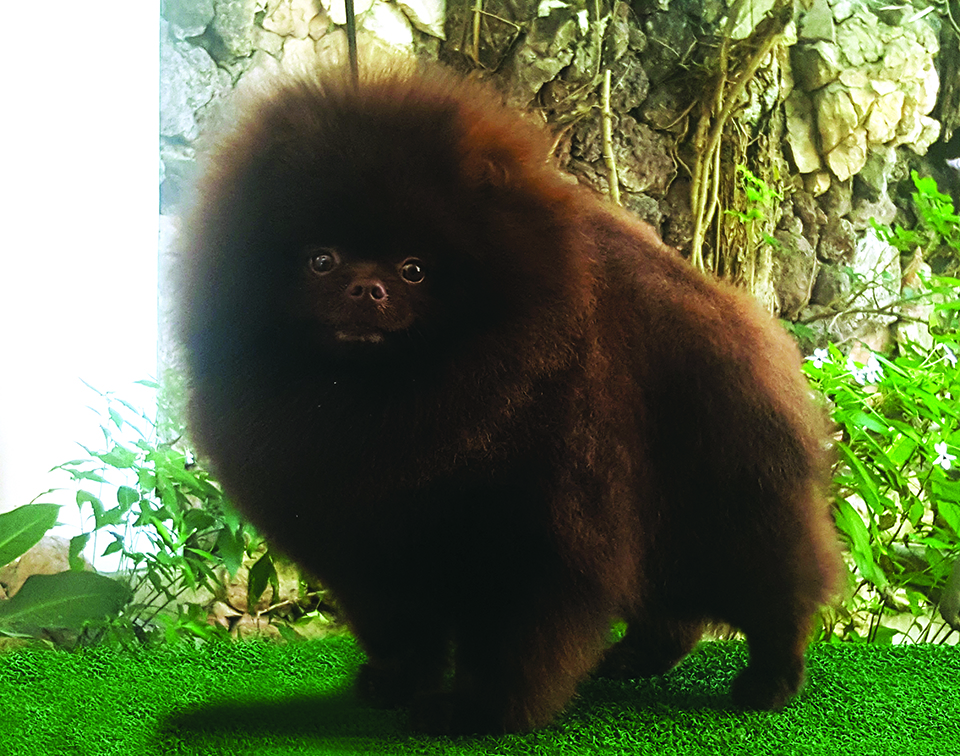
AS: What attracted you to the Pomeranian?
CP: They are very loyal and devout dogs. My Poms have smiling faces, which just make me smile back. Breeding them in quality is a big challenge.
AS: How much did you know about them before starting this venture?
CP: Unfortunately, when I started, I had zero knowledge, and with the time, resources and effort spent, there was a lot of wasted gene pool. If I had the right mentoring or even the knowledge that I have today, I think that perhaps I would even have better Poms today.
AS: Is the Pomeranian one of the most delicate and dainty breeds?
CP: A better description would be [that they are] the “heartbreak breed.” [Their] survival rate is bad.
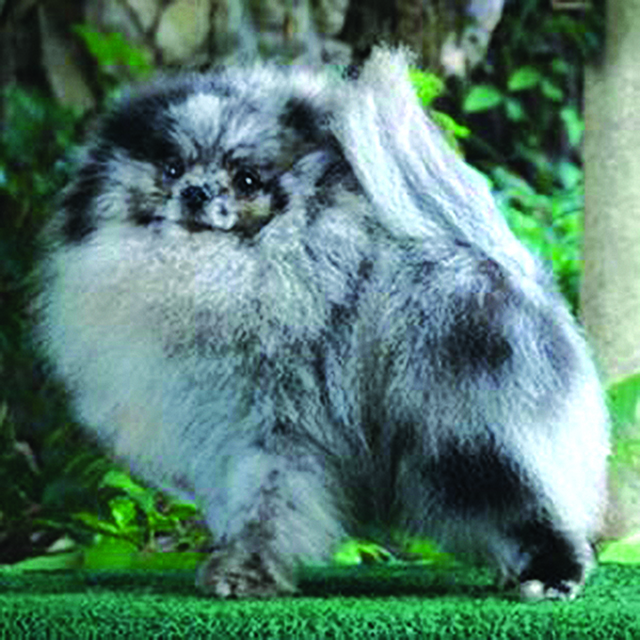
AS: Given their heavy coat, do Pomeranians require special care and grooming?
CP: Maintaining [the] coat of the Pomeranian is easy if you have the consistency and perseverance, with proper regular brushing. Air-conditioning helps a lot.
AS: How do you make sure that a Pomeranian grows a good coat?
CP: There is the genetic part and there is the maintenance part. You need both for optimal results.
There is also the issue of the right kind of coat – the harsh-textured coat – which are late developers as compared to the earlier cotton candy coat, which is a major fault in the American Kennel Club (AKC) standard. This is mainly because [the latter] coat is prone to black skin disease (BSD) or alopecia X. Unfortunately, many judges are still unaware of this issue and would put up this kind of dog, causing popularity for the wrong kind of Poms.
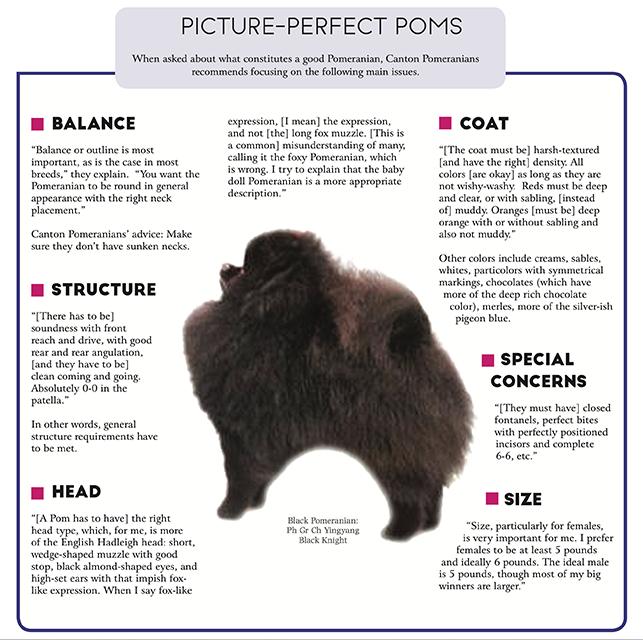
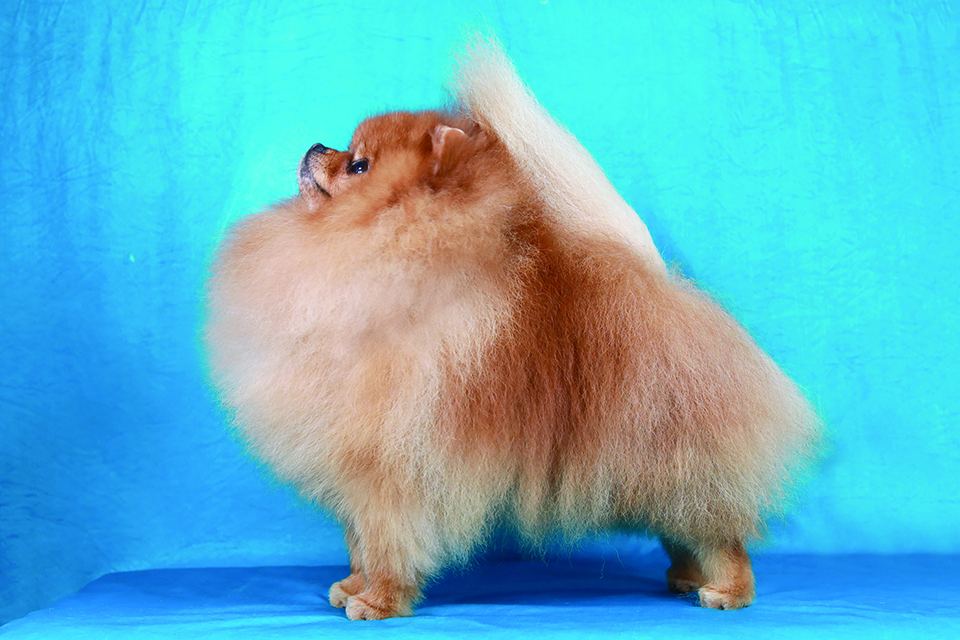
GETTING TO KNOW THE POM
AS: How well do your Pomeranians meet the breed standard? Where did Pomeranians originate?
CP: Pomeranians originated from Germany; that is, Pomerania. [They were] developed and popularized in England. The Pomeranian [was] Queen Victoria’s favorite, being present even [when she was] on her deathbed.
My target Pomeranian is [one with] an English Hadleigh head and an American body, with the right coat texture and the right rear angulation. A good specimen from my breeding is Ph Ch Canton Jet Star. It will meet all standards – those of the AKC, The Kennel Club, and the FCI.
AS: What changes in the Pomeranian have you noticed in the last ten years?
CP: I would like to think that I have been ahead of most of these changes before they became more acceptable. They are as follows.

COLOR THEORY
AS: Can you tell us more about Pomeranians of other colors?
CP: Let’s begin with how UK Pomeranian champions looked during the turn of the 20th century. Observe that the colors included white, black, chocolate, and particolor. These were the original Pomeranian colors.
I think orange was popularized in the ‘50s, causing the other colors to die a natural death when people lost interest. Then, there were the reds, red sables, and cream sables of the English Hadleighs. Hence the term ROCS(Reds Oranges Creams Sables) is one of the two classification in the APC Nationals.
The original colors were then resurrected to popularity: the whites of Frank Hsieh’s Chiao Li Ya Pomeranians; the blacks popularized in the US by Diane Finch’s Ch Finch He Walks in Water, found in a lot of pedigrees worldwide, plus the blacks of the UK winning Poms, although the name escapes me; the chocolates, including Am Ch Heartland’s In the Nickatime, and one of the top winner Pomeranians of all time, Parker, also known as Am Ch Pufpride Sweet Dreams, who was a deep red but was a chocolate carrier who produced chocolates himself; and lastly, the particolors, who are being resurrected but not quite there yet.
How was this done? By pulling out those recessive genes through selective test breeding and the Mendelian theory. More recently, everything was made easier through the use of DNA testing.
It really depends on what standard you are using. Historically and up until present day, blacks and tans are not allowed by the KC standard, while they are perfectly alright according to the AKC standard.
Merles have historically not been in the gene pool of Pomeranians, but decades ago, someone cheated, and it’s now in the gene pool. It is now acceptable in the US standard, but for political reasons, they sabotaged this color by inserting a DQ qualification for blue eyes. I think this is silly, because merles are supposed to have merle eyes, making one or both blue eyes.
[There are also] the brindles, tricolors, lavenders, blues, and so on. They are all acceptable according to the AKC Standard.
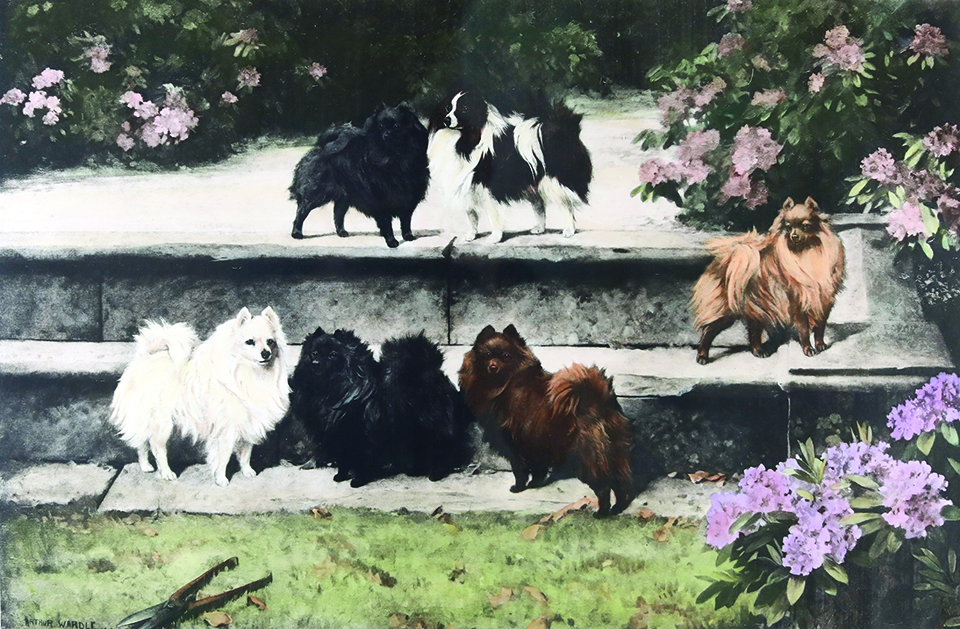
GENE TALK
“The Mendelian theory has been used extensively in breeding, whether the issue is about color, breeding out faults, or breeding in virtues,” explains Canton Pomeranians.
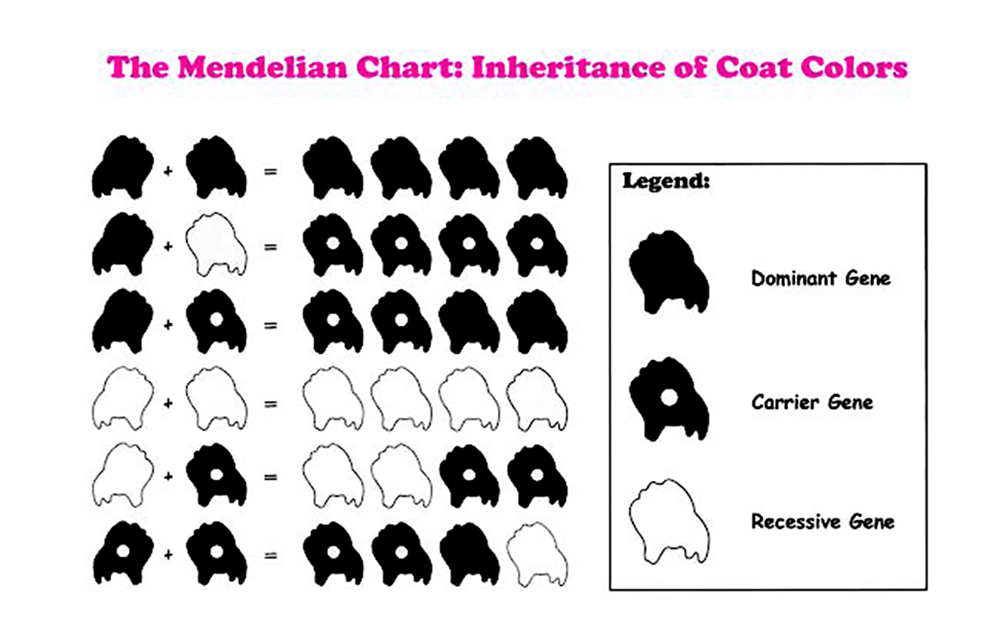
CONCERNS CLARIFIED
AS: Why are your Pomeranians unlike many of the ones seen elsewhere who have big heads, big legs, and thick coats?
CP: Each breed has a breed bible, referred to as the standard. This standard lists specifications for the perfect Pomeranian. Certain countries and regions will have their own breed standard as well.
For example, you have the AKC standard in the US. There is also the KC standard in the UK, and the FCI standard for most other countries in the world.
Many of these standards are similar, but [there are a few differences]. Initially, the Pomeranians all over the world were based on the KC standard, wherein they were supposed to be fine-boned. Eventually, other countries, such as the US, started developing their own interpretation of what “bonier” meant, although it did not mean big-boned.
The big-headed, big-boned Pom with soft cotton-ish coat is not the breed standard. In fact, these traits are very harmful to the breed, because they are [correlated to] dwarfism. These dogs are prone to BSD, wherein their coats fall off and do not grow back. This is a major fault in the AKC standard.
The correct Pomeranian is well-balanced, medium-boned, with a wedge-shaped muzzle and a good stop. The expression should be a smiling face that looks alert and impish.
AS: Pomeranians often have tails almost touching their heads. Are they all born this way?
CP: The classic standard calls for a short coupled dog, but I believe the better term is a balanced dog.
If they’re too short, there will be poor movement, oftentimes leading to crabbing. I [prefer] a high neck placement, with the head capable of moving like that of a cobra. The head is erect and held high, even when moving. This should not be confused with a long neck, which would bring the head down while moving.
A high tail set laid flat on the back with long straight plumage going over the head is what I breed for. When they do not have this ideal, some grooming and presentation enhancements are done to achieve the look.
This length of tail has been lost in many American Pomeranians today because of their presentation. With the ultra-sculptured look, the matching tail is cut short to keep the tail in place when moving. This has caused less focus on the desirable long plumage.
I really do not agree with shortened tails. More recently, the natural look is being encouraged by the American Pomeranian Club and hopefully, we will see the longer plumes coming back in the American Pom scene.
AS: Which is more important, genotype or phenotype?
CP: I would follow both. Generally, when a female dog is in heat, I would look at the pedigree up to the grandparents and somehow try to line-breed from there.
My favorite and best dogs come from half-brother, half-sister breeding, but I would do this really carefully and selectively. Most of the time. I would
do uncle-niece, nephew-auntie, grandfather-granddaughter, and first-cousin breeding. Every three generations or so, I would do a total outcross. With a lot of choices from my breeding stock, I try to complement the choices by using similar types, with no common faults and with cementing virtues.
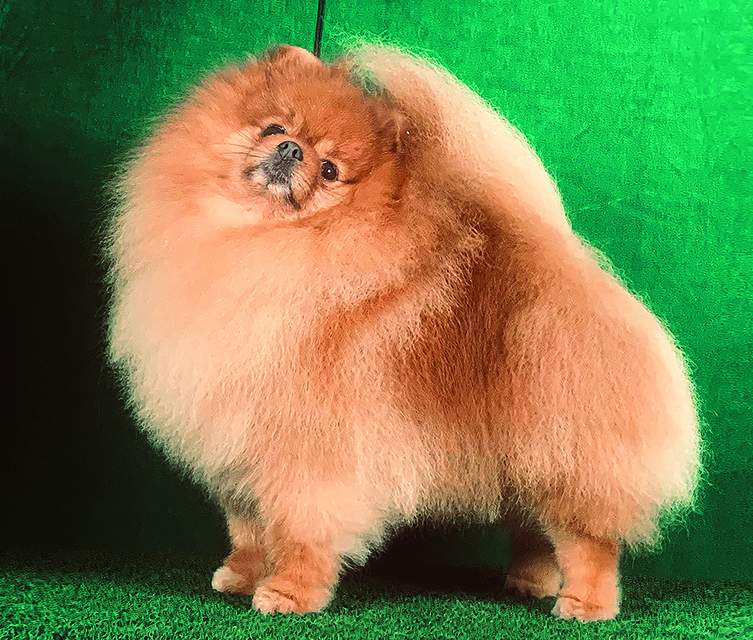
HEALTH IS WEALTH
When asked about health concerns, Canton Pomeranians has a lot to share. “In summary, from birth to about two months, they tend to have aspiration pneumonia. You need to suck out the fluid from the [respiratory tract]; otherwise, they will die.
“At about two months, they tend to get stressed and have a difficult adjustment period when they are weaned from the mothers. I give Albon when there will be some changes in the puppy environment, [such as when they are separated from] the mother. They also tend to go down like a discharged battery robot, which is usually [due to] hypoglycemia. The response to this is giving them sugar or honey diluted in water.
“They may have uncontrolled diarrhea, particularly when [there are] a large number of pups. The best way to determine if this is either coccidia or giardia is by looking at the stool under the microscope.” What is revealed upon microscopy will help determine the treatment: Albon for coccidia and Flagyl for giardia.

“They need to be running a lot so that the chest drops. I usually make them swim for about 30 minutes with manual assistance.”
When dogs scratch, it’s for a reason. “Find out why,” advises Canton Pomeranians. “Is it because their hair is wet, or because there’s tangled hair? Are there ticks or fleas? Is it dandruff, which could lead to mange? If it is in the ear area, could it be ear mites?” Again, the treatment will depend on the cause.
To prevent tooth decay due to calcification, scalers are used. Other conditions include coughing, teeth development, bladder stones, and undescended testes.
“[It is] best to consult a veterinarian,” they explain. They have a vet on call and who does regular visits.
COMMON QUESTIONS ABOUT POMERANIANS
WHAT FOOD DO YOU GIVE POMERANIANS?
“I stick to commercial dog food,” says Canton Pomeranians. “I sometimes supplement their food with human grade ground beef, chicken egg, and balut.”
IS CLIMATE RELEVANT TO THE CARE OF POMS?
“Some of my dogs are kept in air-conditioned rooms, while others are not. Our rule is to keep them dry and clean, dry being more important than clean. During the rainy season, we have to keep on hair-drying our dogs.”
When a dog starts scratching, there may be something wrong. “Acting on this immediately will result in a quick remedy.”
WHAT IS THE USUAL SIZE OF THE LITTER?
“The litter size, especially for tightly-bred
Poms, is between one to three pups per litter. Previously, I would have said that I do not want large litters, because the pups tend to be smaller, with less chances of surviving. However, I believe that fertility is important as well.”
Some of their Poms have produced five to six pups per litter naturally, according to Canton Pomeranians, which has become the envy of others.
SHOULD FEMALES BE BIGGER?
“Most of the females under our care are between 5-7 pounds, with 6 pounds being ideal. Though the smaller females are prettier looking, I would rather keep the larger females.”
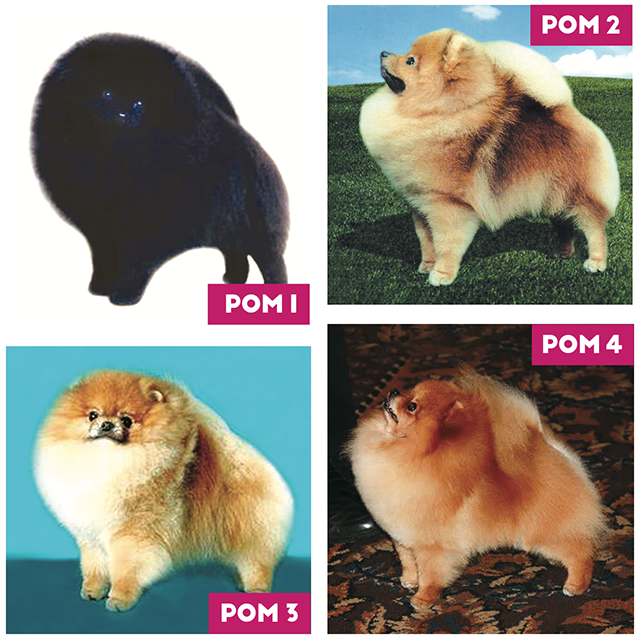
MAINTAINING GENERATIONAL ADVANTAGE
AS: Tell us more about the strengths of your breeding program, and whether or not you get professional help to manage it.
CP: I believe that the strength of my breeding is the bloodline upon which
it is based. Mine is focused on my own stud dogs, of seven generations of continuous Best in Show (two generations of which came from outside males, while five come from my own stud dogs). I started initially line-breeding on Eng Ch Derronill’sMaxamillion, and when I outcrossed this linebred bitch to a black dog called Am Ch ValcopyWakham Valentino, it produced the following.
Am Ch Ph HOF Canton the Gigolo. This is the beginning of my line of Best in Show dogs. (POM 1)
The above was followed by his son, Ph HOF Canton Braveheart… (POM 2)
…Who was then followed by his son, Am Th Ch Ph HOF Canton Bravestar. He finished his Thailand title in one weekend at the prestigious Impact Show, with Best in Shows and Reserve Best in Shows. (POM 3)
Then, he was followed by his son, Am Gr Ch It Ch Canton Jet Li, who was Best of Breed at the American Pomeranian Club Nationals 2013. (POM 4)
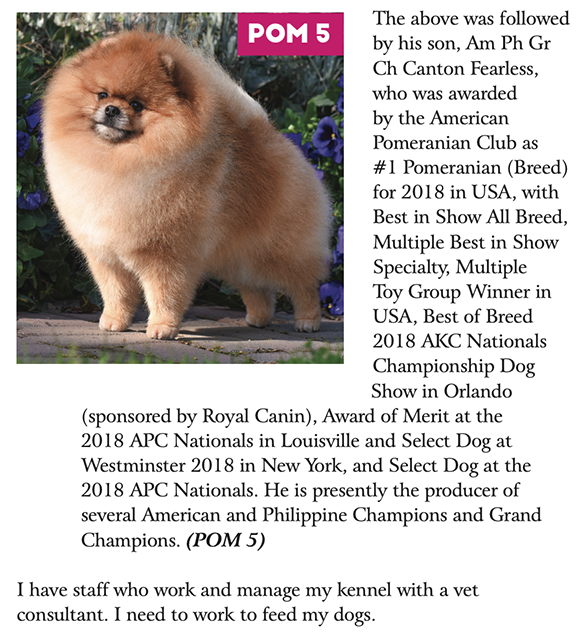
AS: How do you deal with the shows? Do you get help from professional handlers and trainers?
CP: I have staff who do the training in-house. He shows my Poms in the Philippine ring and sometimes abroad.
I am in partnership with Mountain Crest, the number one Pomeranian breeder in the US. They show and represent me in the US. We use each other’s stud dogs, and our dogs go, back and forth.
Several Pomeranian breeders in the US show my dogs, including Springwood and Sundown, while many others have expressed their interest. On some occasions, I have used professional handlers, but that is a very expensive option.
AS: How do you explain your success in breeding?
CP: I believe that the success in my breeding program lies in
the continuous line-breeding of winning stud dogs with bitches. Inbreeding and line-breeding are essential for consistency. I stick to my own line and breed out to compatible lines at least every three generations to bring in hybrid vigor.
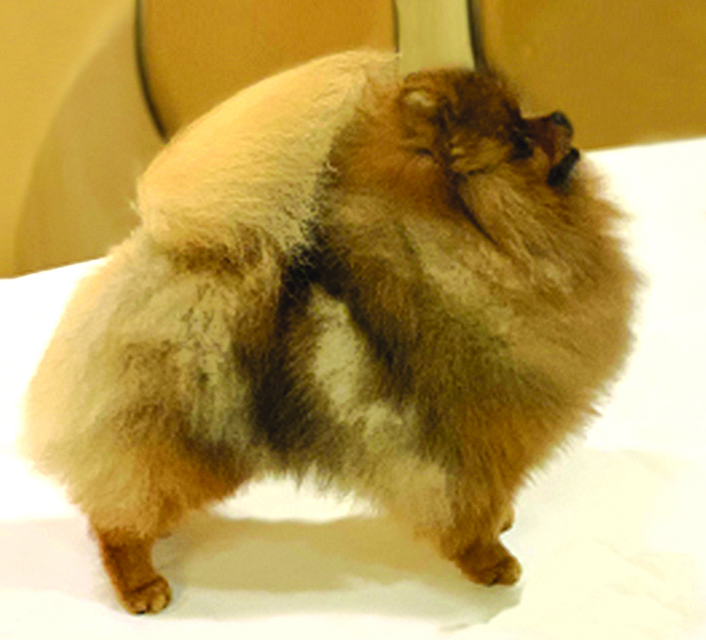
PREFERENCES
AS: Are Pomeranians supposed to have defective bites and loose teeth?
CP: I have been told that I am too finicky with bites and teeth, and rightly so. Especially when you line-breed and inbreed,
one of the very first things that fall to pieces is the bite.
Look at the history of human European royalties.
I want my bites to be perfect, with all teeth perfectly placed. My target is to have 6-6 incisors, and although I do not get them all the time, I would usually avoid line-breeding them, unless there is some extremely redeeming reason to do otherwise. If the bites are not good, they are out.
What you use for breeding is what you get, [which is why] 6-5 and 6-4 would sparingly be used. So, to answer your question, defective bites are unacceptable in my kennel and if I ever produce them, they are petted out.
Due to lack of care, my Poms may lose their teeth. I want their teeth to be large to be more durable. If the teeth get too small, I want them to breed to partners with larger teeth. Unfortunately, those with larger teeth do not have pretty faces.
AS: What colors do you prefer?
CP: My favorite Pomeranian color has always been bright deep red, though I appreciate all colors.
SHOW RING SUCCESS
Canton Pomeranians has quite a long litany of achievements for showing over the past 44 years, with several rooms full of trophies and ribbons for Breed, Group, and Best in Show wins. Here are the achievements of their later foundation dogs.

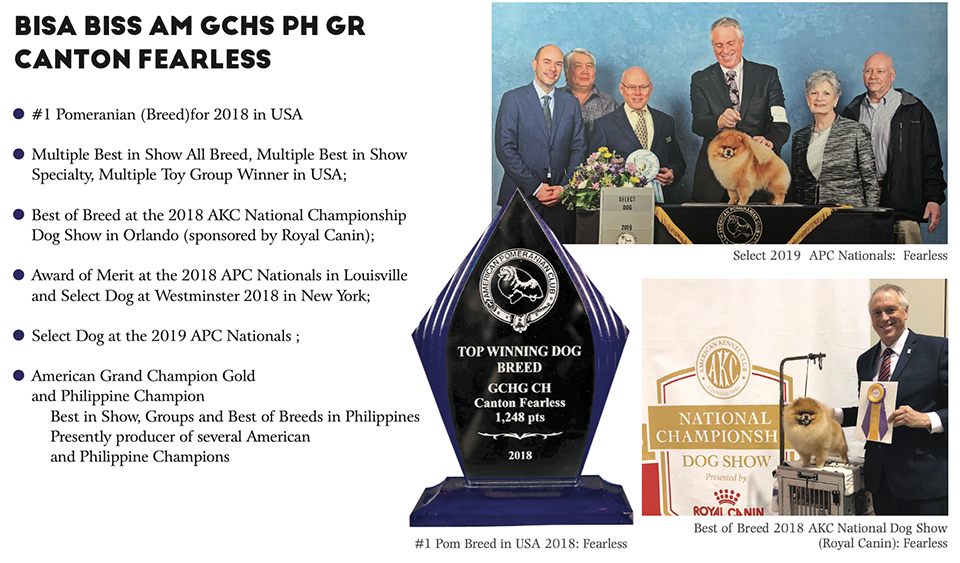

THE PRESENT AND FUTURE OF POMERANIANS
AS: What advice will you give a young person interested in exhibiting Pomeranians?
CP: Pomeranians have attracted a lot of interest among other dog fanciers. Many have managed to stay in the breed by just importing [over and over], producing only rubbish. I do not consider them genuine breeders, since they do not have a track record of homebred champions. Their boast is merely based on the accomplishments of other breeders. Very few have managed to breed and show with their own [lines]. This is the gauge of a true breeder: winning with their own homebreds.
[I would like to tell newbies that] firstly, I believe that [someone who has a genuine interest] has to first choose the style of Pomeranian he wants, since there are so many variations. Do research and go to dog shows to see what is available. If possible, go overseas to see competitions.

Is his selected breeder consistent in his breeding programs? That is, are his wins his own breeding or merely imports?
Secondly but just as important, research on the person whom you will be dealing with, not only in terms of the female dog [they’re offering], but also the support they can give you in the future. By support, I mean mentoring and the access to the breeding stock.
I cannot overemphasize the importance of mentoring, particularly for a beginner. Even now, I try to seek the opinions of others in my breeding efforts. Equally important is the “fountain”, or the choice of breeding stock, [with which] you can line-breed for [present and] future production.
AS: Did you have a mentor yourself?
CP: There is always something to learn and think about in the purebred sport. Over the years, I have met people whose wisdom I appreciate. Once in a while when opportunity warrants, I talk to them and try to pick their minds on some matters, even if they are [involved in] different breeds.
Many of these people have passed away, such as Keven Harris (Australian Judge), Michael Hughes Hall (South African Judge), Derek Hill (Pomeranian Breeder and Judge), Jerrie Freia (US Pomeranian breeder and my partner), and many others. Some of my more current ones are Dr. Raymundo Lo (Philippine Judge and Pekingese breeder), David and Carlene Gilstrap (US Breeder and my partners), and Gaurav Malik (Indian friend), among others.

AS: Given the current COVID-19 pandemic, how do you see the dog game in the years to come?
CP: We hardly have had any dog shows since March 2020. With regards to the future of the dog sport, I think it will become more challenging, unless dog clubs start using their influence to make it easier. Governmental restrictions and interference is starting. Dog travel is getting to be more difficult, too. I believe these dog clubs are the guardians of pure dog sports, and they should do something to ensure an atmosphere where they can remain in the renaissance of growth and development.
AS: How has professional rivalry impacted breeding practices?
CP: I believe it is the responsibility of
all breeders to share their bloodlines
with others. I have leased a lot of foreign stud dogs and have even sent my bitches overseas to get new bloodlines. That is how I have produced some of my best dogs. I allow my dogs to be used for breeding, too. I believe global cooperation is the key.
AS: Are you affiliated with the Philippine Canine Club, Inc. (PCCI)?
CP: I am a lifetime member of the PCCI. I have been invited to be a director but have declined, because I want to avoid dog politics and just want to enjoy my dogs. I am a licensed Toy Dog judge.
